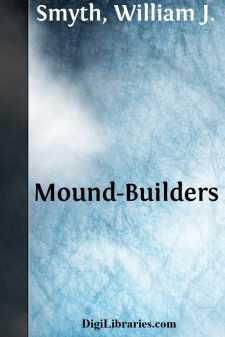Categories
- Antiques & Collectibles 13
- Architecture 36
- Art 48
- Bibles 22
- Biography & Autobiography 813
- Body, Mind & Spirit 138
- Business & Economics 28
- Children's Books 12
- Children's Fiction 9
- Computers 4
- Cooking 94
- Crafts & Hobbies 4
- Drama 346
- Education 46
- Family & Relationships 57
- Fiction 11821
- Games 19
- Gardening 17
- Health & Fitness 34
- History 1377
- House & Home 1
- Humor 147
- Juvenile Fiction 1873
- Juvenile Nonfiction 202
- Language Arts & Disciplines 88
- Law 16
- Literary Collections 686
- Literary Criticism 179
- Mathematics 13
- Medical 41
- Music 40
- Nature 179
- Non-Classifiable 1768
- Performing Arts 7
- Periodicals 1453
- Philosophy 64
- Photography 2
- Poetry 896
- Political Science 203
- Psychology 42
- Reference 154
- Religion 505
- Science 126
- Self-Help 81
- Social Science 81
- Sports & Recreation 34
- Study Aids 3
- Technology & Engineering 59
- Transportation 23
- Travel 463
- True Crime 29
Mound-Builders
by: William J. Smyth
Categories:
Description:
Excerpt
MOUND-BUILDERS
By Rev. William J. Smyth, M.A., B.Sc., Ph.D.
When the early settlers began to pioneer the unbroken forests of North America, they considered the various Indian tribes to be the true Aborigines of this continent. But long before the red man, even long before the growth of the present forests, there lived an ancient race, whose origin and fate are surrounded with impenetrable darkness. The remains of their habitations, temples and tombs, are the only voices that tell us of their existence. Over broad areas, in the most fertile valleys, and along the numerous tributaries of the great rivers of the central and western portions of the United States, are to be found these wonderful remains, of the existence and origin of which, even the oldest red man could give no history.
Following in the track of these ancient tumuli, which have been raised with some degree of order and sagacity, we are bound to believe that they were constructed by a very intelligent and somewhat civilized race, who during long periods enjoyed the blessings of peace, but like most nations of the earth, at times were plunged in the horrors of war. We cannot tell by what name these strange people were known during their existence. But archæologists, to keep themselves safe, have given them the name of "Mound-builders," from the nature of the structures left behind them.
Of this wonderful, semi-civilized, prehistoric race, we have no written testimony. Their mysterious enclosures, implements of war, and comparatively impregnable fortifications, together with a few strange tablets, are the only evidence of their character, civilization, and doom. No contemporary race, if such there existed on this continent, has left any record of them.
The mounds they have left are found in the western part of the State of New York, and extend, it is said, as far as Nebraska. And as they have lately been found in the Northwest, they have thus a much more northern limit than was at first thought, while the southern limit is the Gulf of Mexico.
Having seen only a few mounds in Illinois, Indiana and Kentucky, I must confine my paper to those found in the State of Ohio, where, during a residence of seventeen months, I made the closest investigation my time and duties permitted. In Ohio, the number of mounds, including enclosures of different kinds, is estimated at about 13,000, though it requires the greatest care to distinguish between the mounds proper and those subsequently erected by the Indians. In some parts they are very close together, which is strong evidence that these regions were densely populated. In others, a solitary mound, with adjacent burial mounds, gives us the idea of a rural village or town.
Enclosures.—In the State of Ohio, alone, there have been found 1,500 enclosures. Some of these have walls ranging in height from three to thirty feet, enclosing areas of from ten to 400 acres. Those areas, enclosed by strong walls, erected in regions difficult of access, were undoubtedly intended as military enclosures; while those areas enclosed by slight walls, with no mounds to cover the openings, were intended as sacred enclosures....


